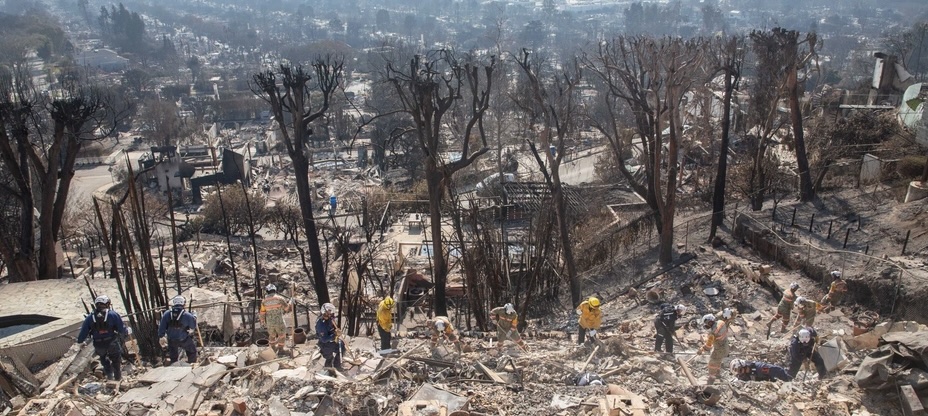Already a subscriber? Make sure to log into your account before viewing this content. You can access your account by hitting the “login” button on the top right corner. Still unable to see the content after signing in? Make sure your card on file is up-to-date.
A new report released by UCLA reveals that the recent Palisades and Eaton fires in Los Angeles have caused property losses of up to $164 billion.
Some shit you should know before you read: The Palisades and Eaton fires were the most devastating wildfires ever to hit Los Angeles County, collectively burning 37,728 acres across Pacific Palisades, Malibu, and Altadena. The Palisades Fire burned 23,707 acres, destroying 6,822 residential and commercial structures, while the Eaton Fire burned 14,021 acres, destroying 9,418 buildings in Altadena. Officials believe that a combination of strong Santa Ana winds, extreme drought conditions, and dry vegetation created the perfect environment for the fires to spread rapidly. Investigators are still determining the precise causes, though downed power lines are the main suspected factors.

What’s going on now: The report issued by the UCLA Anderson Forecast estimates that the total property and capital losses from the Palisades and Eaton fires range between $95 billion and $164 billion, with insured losses totaling approximately $75 billion. Due to the fires, the county’s GDP is expected to decline by 0.48% in 2025, representing a $4.6 billion economic loss, while local businesses and employees in the affected areas are projected to suffer $297 million in total wage losses. In addition to direct structural damage, infrastructure—including roads, bridges, power lines, and sewage systems—sustained significant harm, further adding to the long-term financial impact.

The report also highlights significant challenges for Los Angeles’ housing market, which was already facing a critical shortage before the wildfires. UCLA economists found that the fires eliminated two-thirds to three-quarters of the county’s annual new housing supply, further tightening the market and worsening affordability. With thousands of homes lost, rental prices and homeownership costs are expected to surge, particularly in high-demand areas such as Malibu, Pacific Palisades, and Altadena.
This all comes as local and state officials have issued warnings about potential price gouging in the aftermath of the fires, particularly in the housing and construction sectors. California law prohibits price hikes of more than 10% during a declared state of emergency, and authorities have vowed to aggressively prosecute violators.






